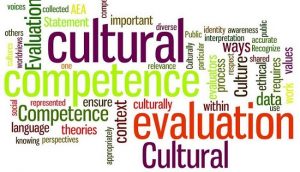
Cultural Competency

What Cultural Competency?
Cultural competence is the ability to understand, communicate with and effectively interact with people
across cultures.
It’s Easier than you think
We may have a limited influence on the home lives of our students. Though once they enter our school, we have the opportunity to assess student needs and then work to adapt our instruction to meet their needs.
If a child’s most basic needs are not met, their learning can be hindered. Addressing emotional needs is one way to bridge a child’s security-based physiological needs. When a child does not feel an emotional connection with their teacher, they may have difficulty reaching their greatest potential. A child will not allow you to teach them unless they feel as though you truly care about them. Learning is directly tied to your emotions (affective domain).
Before school starts, I initiate contact with my students. During the regular school year, I spend time in the cafeteria and at recess building relationships with them and taking mental notes on personalities. In the summer, I send postcards to my students and I make an introductory phone call to students on my roster. What I have learned by doing this is that students have an easier time transitioning into my teaching style and expectations because I had a prior relationship with them.
Culture shapes identity and identity shapes how a child sees and understands the world. It is important that teachers pay attention to the nuance of the culture of the students that they serve. During playtime, I am listening to what the students are discussing. It is during the informal interactions with their peers that I learn students likes and dislikes. Students refer to this as ‘ear hustling.’ When students are playing, their defenses are down and you can learn the true nature/personalities of your students.
I keep my expectations high for all my students. I use a multi-criteria for assessing and implementing instruction. When I was a classroom teacher, my students rarely stayed at home. My attendance rate was high because the students wanted to be at school. My students had high state test scores because they knew I believed in them and I had given them to tools necessary to be successful. I built on my students’ strengths and not their perceived weaknesses. They knew my classroom was a safe place to learn, change and grow. You can have the best lesson plans prepared and if you have not built a relationship based on mutual trust and respect… the learning in your classroom may be hindered.